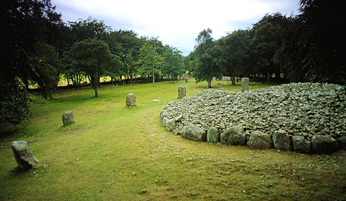The Earth with its Sun.
Click on image for full size
Aris Multimedia Entertainment, Inc. 1994
The Earth's Orbit
Like all planets in our solar system, the Earth is in an elliptical
orbit around our Sun. In Earth's case, its orbit is nearly circular, so
that the difference between Earth's farthest point from the Sun and
its closest point is very small. Earth's orbit defines a
two-dimensional plane which we call the
ecliptic.
It takes roughly 365 days for the Earth to go around the Sun once.
This means that the Earth is rushing through space around the Sun at a
rate of about 67,000 miles per hour! The time it takes for the Earth
to go around the Sun one full time is what we call a year.
The combined effect of the Earth's orbital motion and the tilt of its rotation axis result in the seasons.
You might also be interested in:

Let's get rid of some common misconceptions about the seasons. The Earth's orbit is in the shape of an ellipse, so that sometimes the Earth is a little bit closer to the Sun than at other times. Is this
...more
If a body (like the Earth) is orbiting around the Sun, we say it is closest to the Sun at perihelion and farthest from the Sun at aphelion. In 2000, perihelion for the Earth was on January 3, 2000, and
...more
Some ideas are used in many, many places throughout science. We have grouped these "starting points for science" into three clusters: space, time, and matter. "Space" is the word we use for everything
...more
People from Asia crossed the Bering Strait into North America. These people were first in this new land and so they are known as Native Americans. Over time, these people broke into tribes (as seen on
...more
"The movements of the heavenly bodies are an admirable thing, well known and manifest to all peoples. There are no people, no matter how barbaric and primitive, that do not raise up their eyes, take note,
...more
The stones of Carnac, France, are probably the most famous stones markings outside of those found at Stonehenge in England. There are many, many stones at Carnac. And these stones are very old too, the
...more
Not too far from Loch Ness, there lies three giant tombs made of stones. They are called the Balnuaran of Clava. The Balnuaran of Clava, giant tombs encased in stone, can be found close to Inverness in
...more















